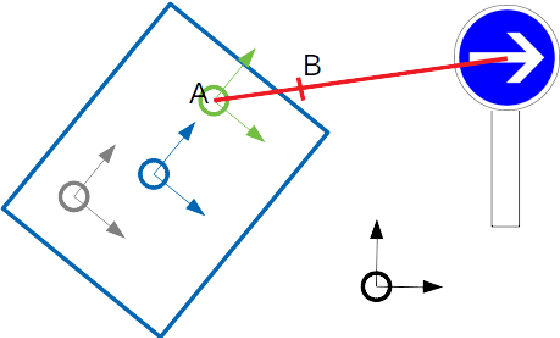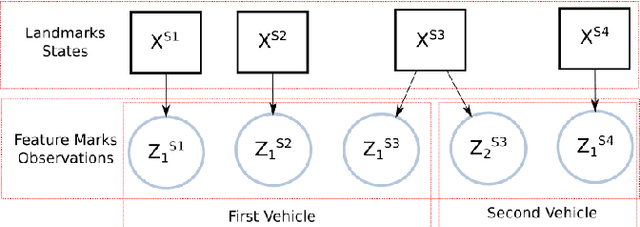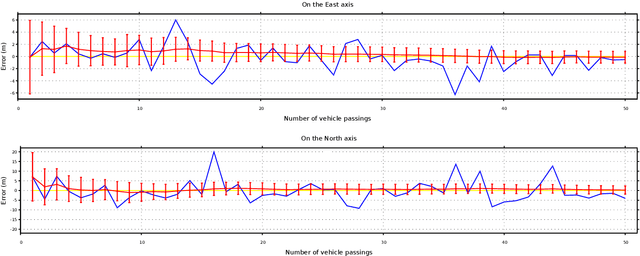A Collaborative Framework for High-Definition Mapping
Paper and Code
Oct 14, 2019



For connected vehicles to have a substantial effect on road safety, it is required that accurate positions and trajectories can be shared. To this end, all vehicles must be accurately geo-localized in a common frame. This can be achieved by merging GNSS (Global Navigation Satellite System) information and visual observations matched with a map of geo-positioned landmarks. Building such a map remains a challenge, and current solutions are facing strong cost-related limitations. We present a collaborative framework for high-definition mapping, in which vehicles equipped with standard sensors, such as a GNSS receiver and a mono-visual camera, update a map of geo-localized landmarks. Our system is composed of two processing blocks: the first one is embedded in each vehicle, and aims at geo-localizing the vehicle and the detected feature marks. The second is operated on cloud servers, and uses observations from all the vehicles to compute updates for the map of geo-positioned landmarks. As the map's landmarks are detected and positioned by more and more vehicles, the accuracy of the map increases, eventually converging in probability towards a null error. The landmarks' geo-positions are estimated in a stable and scalable way, enabling to provide dynamic map updates in an automatic manner.
 Add to Chrome
Add to Chrome Add to Firefox
Add to Firefox Add to Edge
Add to Edge